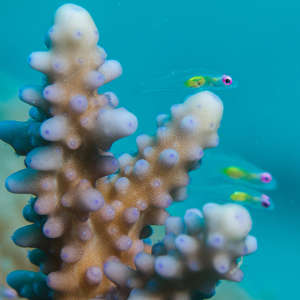Using AI to control energy for indoor agriculture
30 September 2024
Published online 22 July 2019
Microbes inhabiting coral reefs could be key to their adaptation to a changing environment.

Anna Roik
Stony corals live in close association with tiny algae and a diverse community of bacteria, collectively referred to as the microbiome. These organisms provide a variety of services to their host, including energy production, nitrogen fixation, and protection against ‘bad’ bacteria. Scientists are investigating how microbiome restructuring could contribute to coral adaptation to changing environments.
A team of scientists from Saudi Arabia, Yemen, the USA, the UK and Germany moved two types of corals from clean Red Sea waters to areas polluted with wastewater and sewage runoff.
The microbiome of Acropora hemprichii, a coral with thick, irregular branches, was highly flexible, freely associating with the bacteria in the new environments. “A flexible microbiome can help the coral animal and its associated microorganisms adapt to a given environment,” explains microbial ecologist, Christian Voolstra of King Abdullah University of Science and Technology in Saudi Arabia. However, this openness could also make it easier for pathogens to invade.
On the other hand, the bacterial community associated with Pocillopora verrucosa, a lobed, branched coral, remained remarkably stable with differing environments. This could thwart this coral’s ability to adapt.
When the corals were transplanted back from stressed environments to the pristine one, the microbial communities recovered within two years, demonstrating that reducing wastewater and sewage runoffs is central to reef recovery.
“Corals are dying globally. The concern is that their evolution cannot keep pace with the rate of environmental change,” says Voolstra. “It seems that different corals find distinct ways to cope with changing environments,” he says.
“These findings are highly significant,” says microbial ecologist Raquel Peixoto at the Federal University of Rio de Janeiro in Brazil. Peixoto, who was not involved in the study, says the findings could have relevance to her work on using beneficial bacteria in probiotic cocktails to prevent coral bleaching. “The new data suggests that different strategies of probiotic assemblage and inoculation may be necessary for distinct coral species, depending on their level of flexibility,” she explains.
doi:10.1038/nmiddleeast.2019.106
Ziegler, M. et al. Coral bacterial community structure responds to environmental change in a host-specific manner. Nat. Commun. https://doi.org/10.1038/s41467-019-10969-5 (2019).
Stay connected: